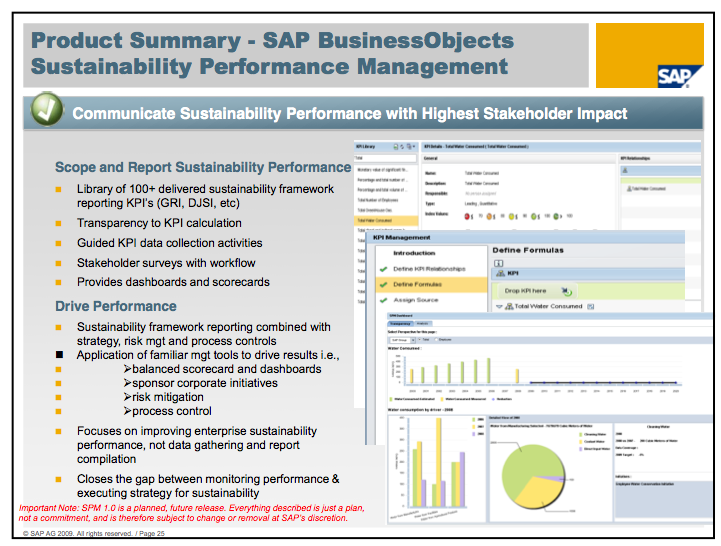
Photo credit James Jordan
I wrote about SAP’s launch of their Sustainability Performance Management software recently. This is a space which is of massively growing importance given the increasing regulations around greenhouse gas emissions, for example.
I was heartened then to hear in a recent discussion with SAS that their Sustainability Management software was launched in April 2008!
For background, SAS are a business analytics software company with with an enviable record of 34 years growth and profitability reporting global revenues of US$2.31 billion in 2009 up 2.2% over 2008. SAS invested 22% of 2008 in R&D (an unusually high figure in the industry) have over 11,000 employees, and 45,000 customer sites in 100 countries. This is a significant company with a serious track record in research and development.
No surprise then that their solution, like the SAP one, is also very comprehensive, encompassing industry templates (GRI, CDP, IPIECA, etc.), customisable pre-built KPI dashboards, reporting, forecasting, scenario modeling (using the AMEE universe of data for scenario analysis – [disclosure – AMEE are a GreenMonk client]).
And, according to Alyssa Farrell, Marketing Manager for SAS Sustainability Solutions, the software is extremely inter-operable:
SAS also recognises that organisations may have other technologies in-house, so our software can be adapted to whatever environment they may already have. SAS has read/write access to any ERP system, we work within the Microsoft Office environment, so you can even use Excel to pull down SAS Analytics. SAS recognises that there is not one solution for everybody and so all the different solutions from SAS recognise that we need to work within this very complex technology application environment.
SAS have had some big customer wins with their Sustainability software:
- Cisco uses the Global Emissions Management module for its real estate portfolio, its transport emissions and for what-if scenarios on sustainability project proposals
- The Norwegian Association of Local and Regional Authorities uses SAS to provide overall sustainability management tools for local governments and
- The University of North Carolina are using the software to help them in their quest to become carbon neutral
With Microsoft and CA also entering this space, I think it is fair to say, Sustainability software is here to stay. In fact, Groom Energy Research reported that climate venture capital investment in Enterprise Carbon Accounting (ECA) firms topped $46m last year, the number of companies offering carbon software solutions grew from 40 to 60 over the course of the year and they predicted that the emerging US market for carbon reporting software is set to grow seven fold over the next two years.
Obviously aware of these trends when we asked Alyssa about pricing, she responded:
The way that our solution is priced is scaled to the size of the organisation [or a division of an organisation] and recognising that it is an early market and we need to get out there and seed our customers, this is the time to buy SAS for Sustainability!
Now, it would seem, would be a very opportune time to be investing in sustainability management software!





